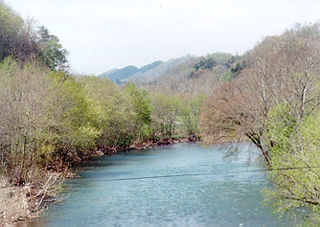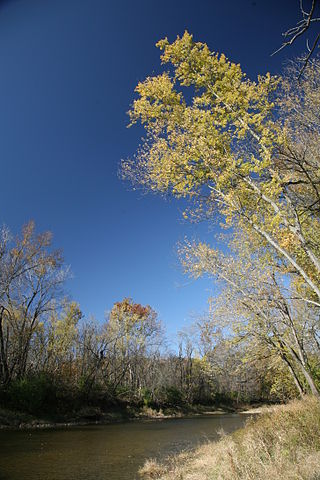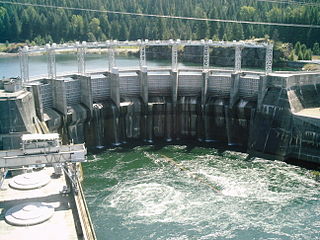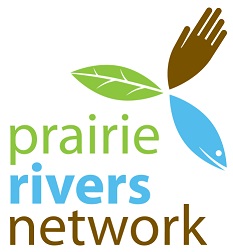
The Clinch River is a river that flows southwest for more than 300 miles (480 km) through the Great Appalachian Valley in the U.S. states of Virginia and Tennessee, gathering various tributaries, including the Powell River, before joining the Tennessee River in Kingston, Tennessee.

Dynegy Inc. is an electric company based in Houston, Texas. It owns and operates a number of power stations in the U.S., all of which are natural gas-fueled or coal-fueled. Dynegy was acquired by Vistra Corp on April 9, 2018. The company is located at 601 Travis Street in Downtown Houston. The company was founded in 1984 as Natural Gas Clearinghouse. It was originally an energy brokerage, buying and selling natural gas supplies. It changed its name to NGC Corporation in 1995 after entering the electrical power generation business.

Fly ash, flue ash, coal ash, or pulverised fuel ash – plurale tantum: coal combustion residuals (CCRs) – is a coal combustion product that is composed of the particulates that are driven out of coal-fired boilers together with the flue gases. Ash that falls to the bottom of the boiler's combustion chamber is called bottom ash. In modern coal-fired power plants, fly ash is generally captured by electrostatic precipitators or other particle filtration equipment before the flue gases reach the chimneys. Together with bottom ash removed from the bottom of the boiler, it is known as coal ash.

Ameren Corporation is an American power company created December 31, 1997, by the merger of St. Louis, Missouri's Union Electric Company and the neighboring Central Illinois Public Service Company of Springfield, Illinois. It is now a holding company for several power companies and energy companies. The company is based in St. Louis, serving 2.4 million electric, and 900,000 natural gas customers across 64,000 square miles in central and eastern Missouri and the southern four-fifths of Illinois by area.

The Moss Landing Power Plant is a natural gas powered electricity generation plant located in Moss Landing, California, United States, at the midpoint of Monterey Bay. Its large stacks are landmarks, visible throughout the Monterey Bay Area. The plant is owned and operated by Houston-based Dynegy and currently has a generation capacity of 1020 MW (net) from its two combined cycle generation units. It was once the largest power plant in the state of California, with a generation capacity of 2560 MW, before its two large supercritical steam units were retired in 2016.

The Middle Fork of the Vermilion River is a tributary of the Vermilion River in Illinois. The Middle Fork rises in Ford County and flows southeast to join the Vermilion near Danville.

The William H. Zimmer Power Station, located near Moscow, Ohio, was a 1.35-gigawatt coal power plant. Planned by Cincinnati Gas and Electric (CG&E), with Columbus & Southern Ohio Electric and Dayton Power & Light (DP&L) as its partners, it was originally intended to be a nuclear power plant. Although once estimated to be 97% complete, poor construction and quality assurance (QA) led to the plant being converted to coal-fired generation. The plant began operations in 1991. Today, the plant is owned and operated by Vistra Corp.

The Environmental Law and Policy Center (ELPC) is a Midwest-based non-profit environmental advocacy group, with offices in Chicago, Columbus (OH), Des Moines (IA), Duluth (MN), Jamestown (ND), Madison (WI), Sioux Falls (SD), and Washington, D.C. ELPC's mission is to advance environmental progress and economic development together throughout the Midwest through projects that advance clean energy, clean air, clean water and clean transportation.
Baldwin Lake is a 2,018-acre (817 ha) reservoir which spans part of the border between Randolph County, Illinois and St. Clair County, Illinois. The lake is part of the Kaskaskia River State Fish and Wildlife Area, near 38°13′03″N089°52′09″W Elevation: 430 feet (130 m), operated by the Illinois Department of Natural Resources, and it is adjacent to, but not part of, the Kaskaskia River. Its elevation may fluctuate with powerplant operations, but averages 423 feet (129 m) above sea level.
Coffeen Lake State Fish and Wildlife Area is an Illinois state park on 297 acres (120 ha) in Montgomery County, Illinois, United States just south of Coffeen.

Cabinet Gorge Dam is a concrete gravity-arch hydroelectric dam in the northwest United States, on the Clark Fork River in northern Idaho. The dam is located just west of the Montana border and the Cabinet Gorge Reservoir extends into Montana, nearly to Noxon Rapids Dam. The purpose of the dam is for hydroelectricity.

The health and environmental impact of the coal industry includes issues such as land use, waste management, water and air pollution, caused by the coal mining, processing and the use of its products. In addition to atmospheric pollution, coal burning produces hundreds of millions of tons of solid waste products annually, including fly ash, bottom ash, and flue-gas desulfurization sludge, that contain mercury, uranium, thorium, arsenic, and other heavy metals. Coal is the largest contributor to the human-made increase of carbon dioxide in Earth's atmosphere.
Rihand Dam also known as Govind Ballabh Pant Sagar, is the largest dam of India by volume. The reservoir of Rihand Dam is called Govind Ballabh Pant Sagar and is India's largest artificial lake. Rihand Dam is a concrete gravity dam located at Pipri in Sonbhadra District in Uttar Pradesh, India. Its reservoir area is on the border of Madhya Pradesh and Uttar Pradesh. It is located on the Rihand River, a tributary of the Son River. The catchment area of this dam extends over Uttar Pradesh, Madhya Pradesh & Chhattisgarh whereas it supplies irrigation water in Bihar located downstream of the river.

An ash pond, also called a coal ash basin or surface impoundment, is an engineered structure used at coal-fired power stations for the disposal of two types of coal combustion products: bottom ash and fly ash. The pond is used as a landfill to prevent the release of ash into the atmosphere. Although the use of ash ponds in combination with air pollution controls decreases the amount of airborne pollutants, the structures pose serious health risks for the surrounding environment.
Coffeen Power Station was a 915 megawatt (MW) coal power plant located south of Coffeen, Illinois near Coffeen Lake State Fish and Wildlife Area in Montgomery County, Illinois. The plant was owned by Vistra Energy. Coffeen began operations in 1965 and was shut down on November 1, 2019.

In February 2014, an Eden, North Carolina facility owned by Duke Energy spilled 39,000 tons of coal ash into the Dan River. The company later pled guilty to criminal negligence in their handling of coal ash at Eden and elsewhere and paid fines of over $5 million. The U.S. Environmental Protection Agency (EPA) has since been responsible for overseeing cleanup of the waste. EPA and Duke Energy signed an administrative order for the site cleanup.
The H.F. Lee Energy Complex, formerly the Goldsboro Plant, is an electrical power generating complex operated by Duke Energy. The power complex was originally owned by the Carolina Power & Light Company, which inaugurated a coal-fired power plant in 1951. Two more coal plants were added in 1952 and 1962, and then oil-fueled turbines were added in 1967–71. In 2012 these units were shut down and replaced by four gas-fired units. The Quaker Neck Lake was built as a cooling pond for the coal-fired power stations, and is still used to supply cooling water. It was originally impounded by a low dam on the Neuse River, but in 1998 the dam was removed, while the lake remained contained in an earthen wall. This change allowed fish to migrate further upstream for spawning. Ash ponds near the lake hold toxic coal ash. There are plans to remove and recycle or bury the ash.

In September 2018, a dam failure caused by Hurricane Florence led to the leakage of coal ash into the Cape Fear River about five miles northwest of Wilmington, North Carolina. The coal ash came from two storage areas owned and operated by Duke Energy. Contaminants from the coal ash may have leached into the water source but long term testing has yet to be done by the U.S. Environmental Protection Agency or other environmental agencies. Clean up efforts were led by Duke Energy and mostly consisted of skimming the coal ash off the top of the water.

Coal refuse is the material left over from coal mining, usually as tailings piles or spoil tips. For every tonne of hard coal generated by mining, 400 kilograms of waste material remains, which includes some lost coal that is partially economically recoverable. Coal refuse is distinct from the byproducts of burning coal, such as fly ash.













